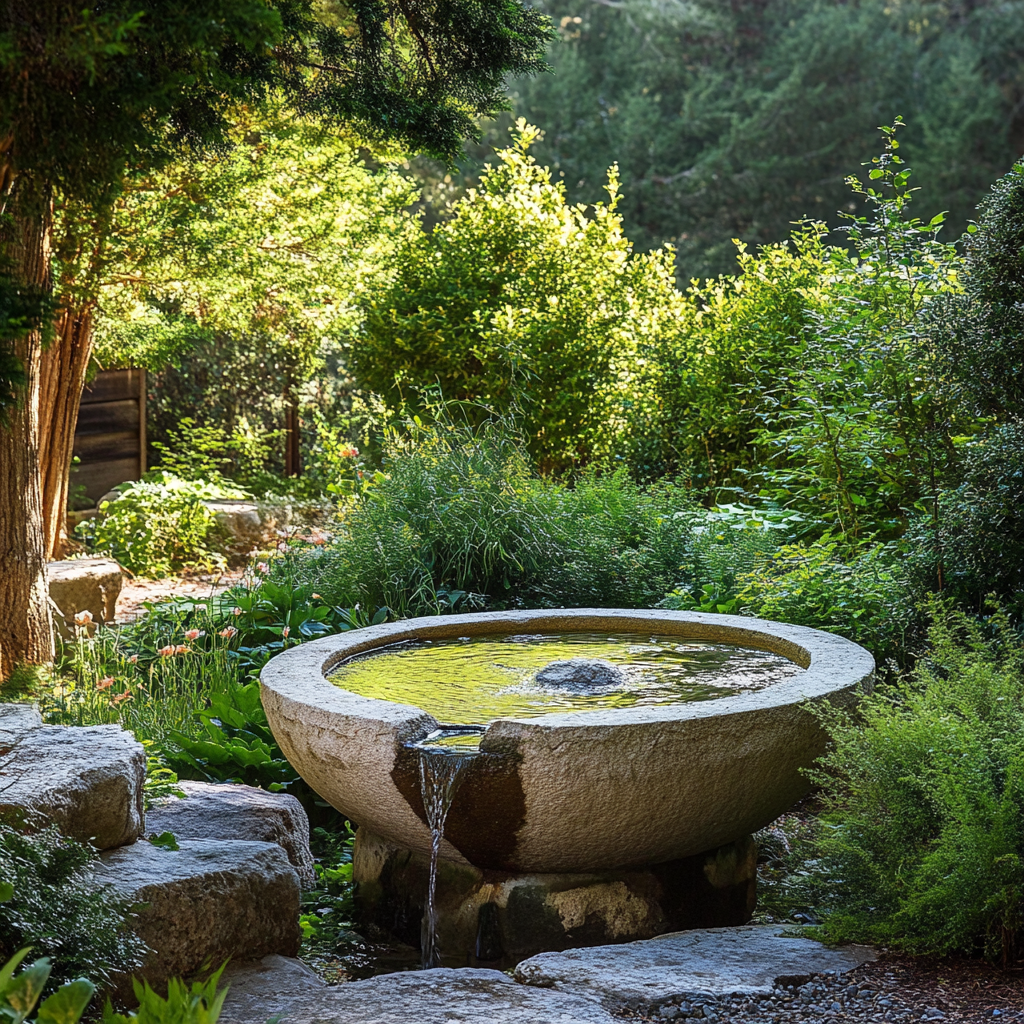How to Use Focal Points in Garden Design to Create Stunning Gardens
Garden bench with lavender
Simple. Peaceful. Powerful. A single bench becomes the heart of this space.
What makes a garden unforgettable?
It’s not just the flowers or how neatly it’s trimmed.
It’s where your eye lands first.
A stone bench tucked into lavender.
A sculptural tree lit just right.
A vintage urn placed at the end of a winding path.
These aren’t random—they’re focal points.
And when used with purpose, they can transform any outdoor space from “nice” to captivating.
Why Focal Points Matter in Garden Design
Focal points give your eye a place to rest. They create structure, guide the flow of the garden, and bring a sense of harmony to even the most casual layout.
Without them, a garden can feel like it’s just… floating. Nice, but forgettable.
With them? Your space gains depth, direction, and intention. You begin to shape how someone moves through the garden—and how they feel while they’re in it.
Whether it’s bold or subtle, a good focal point grounds your space like an anchor.
Popular Focal Points for Stunning Garden Design
Focal points come in all shapes and styles. The key is to choose one that fits your space and complements your garden’s mood.
Here are some great options:
Stone fountain tucked in greenery
Let the sound of water draw you in—this small feature adds movement and calm.
Architectural Elements
Pergolas, arches, arbors
Stone pathways or gates
Sculptures or garden art
Natural Features
Mature trees or unusual shrubs
Boulders or rock groupings
Water features (fountains, ponds)
Plant-Based Anchors
A dramatic planting like alliums or ornamental grasses
Color blocks using perennials
A single, showy container garden
Tip: You don’t need a massive yard to create a focal point. Even a small courtyard can feel grounded with a single statue or feature plant.
Placement and Scale: Maximizing the Impact of Focal Points
Potted focal plant on gravel patio
Big impact, small footprint—focal points can work in even the tiniest garden corners
Two common mistakes with focal points?
Too small—they disappear.
Too large—they overwhelm the space.
Here’s how to find the balance:
Backdrops get bolder: Place taller or more dramatic focal points toward the back to pull the eye inward.
Small spaces, simple anchors: Use subtle focal points near seating areas or along paths—like a large pot or bistro table.
Rule of thirds: Divide your view into thirds (vertically or horizontally) and place focal points at those visual "hot spots" to keep the composition dynamic.
Think of your garden like a photo. Where do you want people to look first? That’s where your focal point should go.
Focal Points That Do More Than Look Good
Focal points aren’t just decorative—they can add purpose to your garden.
A bench invites people to linger.
A tree offers shade and structure.
A raised bed filled with herbs? That’s both functional and fragrant.
By blending form with function, you create a garden that not only looks beautiful but feels right to be in. It becomes a place you actually use—not just look at.
Arbor with climbing roses
A garden gateway that leads both the eye and the imagination.
Tying It All Together: Harmony and Cohesion
A great focal point doesn’t stand alone—it works in harmony with everything around it.
That’s where spacing, rhythm, and balance come into play.
Here’s how to tie everything together:
Repeat shapes, colors, or materials found in your focal point throughout the garden.
Frame your focal point with plants, paths, or lighting to lead the eye naturally.
Keep clutter minimal around your anchor so it has room to shine.
When your garden has one or two well-placed focal points, everything else can fall into place more easily.
Don’t Forget: Check Local Rules First
Before installing a large feature, sculpture, or replacing key plantings, check with your Homeowners Association (HOA) or local guidelines.
Some neighborhoods have rules about what’s allowed in visible areas, especially front yards or near property lines.
The good news? Many HOAs are becoming more flexible as garden design trends evolve. A thoughtfully placed, well-maintained focal point is often welcomed when it improves curb appeal.
Still—ask first. Plan second. You’ll save yourself a lot of frustration.
Conclusion: Your Garden, One Focal Point at a Time
You don’t need to redesign your entire yard to create a stunning garden.
Start with one focal point—one visual anchor that gives your garden a clear sense of place.
It might be a bench framed with lavender.
It might be a bold container on your porch.
It might be the way sunlight hits a small tree just right.
Each one creates meaning, movement, and beauty.
Want Help Bringing It All Together?
Designing with focal points is just one part of creating a garden that feels good to be in.
If you’re ready to build your own outdoor haven, our guidebook, Designing the Dream Garden, is packed with easy-to-follow principles that make your space work and wow.
Inside, you’ll find:
Layout tips that work in any yard size
Guidance on balancing beauty and function
Real examples of gardens built around focal points and flow
Download your copy now and start turning your garden into a place you love to live in—not just look at.






